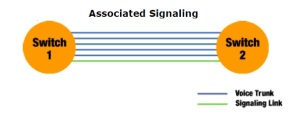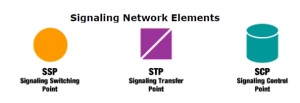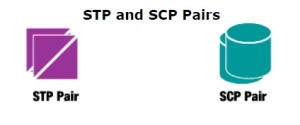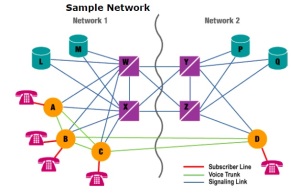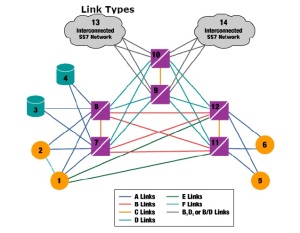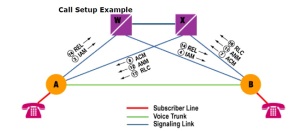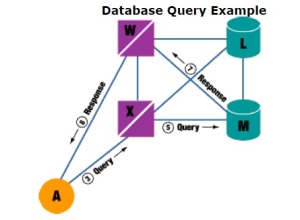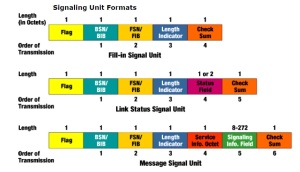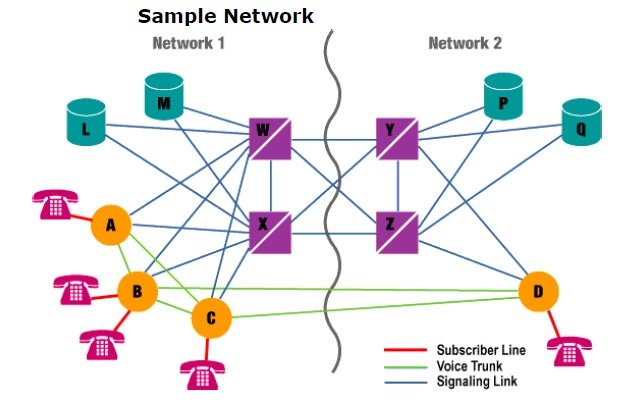
Signaling System 7 (SS7)
Posted on |
Signaling System 7 (SS7)
What Is Signaling?
Signaling refers to the exchange of information between call components required to provide and maintain service. As users of the PSTN, we exchange signaling with network elements all the time. Examples of signaling between a telephone user and the telephone network include: dialing digits, providing dial tone, accessing a voice mailbox, sending a call-waiting tone, dialing *66 (to retry a busy number), etc. SS7 is a means by which elements of the telephone network exchange information. Information is conveyed in the form of messages. SS7 is characterized by high-speed packet data and out-of-band signaling.
What Is Out-of-Band Signaling?
We are used to thinking of signaling as being in-band. We hear dial tone, dial digits, and hear ringing over the same channel on the same pair of wires. When the call completes, we talk over the same path that was used for the signaling. Traditional telephony used to work in this way as well. The signals to set up a call between one switch and another always took place over the same trunk that would eventually carry the call. Signaling took the form of a series of multifrequency (MF) tones, much like touch tone dialing between switches.
Out-of-band signaling establishes a separate digital channel for the exchange of signaling information. This channel is called a signaling link. Signaling links are used to carry all the necessary signaling messages between nodes. Thus, when a call is placed, the dialed digits, trunk selected, and other pertinent information are sent between switches using their signaling links, rather than the trunks which will ultimately carry the conversation. It is interesting to note that while SS7 is used only for signaling between network elements, the ISDN D channel extends the concept of out-of-band signaling to the interface between the subscriber and the switch. With ISDN service, signaling that must be conveyed between the user station and the local switch is carried on a separate digital channel called the D channel. The voice or data which comprise the call is carried on one or more B channels.
Why Out-of-Band Signaling?
- It allows for the transport of more data at higher speeds.
- It allows for signaling at any time in the entire duration of the call, not only at the beginning.
- It enables signaling to network elements to which there is no direct trunk connection.
Signaling Network Architecture
If signaling is to be carried on a different path from the voice and data traffic it supports, then what should that path look like? The simplest design would be to allocate one of the paths between each interconnected pair of switches as the signaling link. Subject to capacity constraints, all signaling traffic between the two switches could traverse this link. This type of signaling is known as associated signaling and is shown below in Figure.
Associated signaling works well as long as a switch’s only signaling requirements are between itself and other switches to which it has trunks. If call setup and management was the only application of SS7, associated signaling would meet that need simply and efficiently. In fact, much of the out-of-band signaling deployed in Europe today uses associated mode.
The North American implementers of SS7, however, wanted to design a signaling network that would enable any node to exchange signaling with any other SS7−capable node. Clearly, associated signaling becomes much more complicated when it is used to exchange signaling between nodes which do not have a direct connection. From this need, the North American SS7 architecture was born.
The North American Signaling Architecture
The North American signaling architecture defines a completely new and separate signaling network. The network is built out of the following three essential components, interconnected by signaling link:
Signal Switching Points (SSPs)
Signal Transfer Points (STPs)
Signal Control Points (SCPs)
Once deployed, the availability of SS7 network is critical to call processing. Unless SSPs can exchange signaling, they cannot complete any interswitch calls. For this reason, the SS7 network is built using a highly redundant architecture. Each individual element also must meet exacting requirements for availability. Finally, protocol has been defined between interconnected elements to facilitate the routing of signaling traffic around any difficulties that may arise in the signaling network.
STPs and SCPs are customarily deployed in pairs. While elements of a pair are not generally co-located, they work redundantly to perform the same logical function. When drawing complex network diagrams, these pairs may be depicted as a single element for simplicity, as shown in Figure.
Basic Signaling Architecture
- STPs W and X perform identical functions. They are redundant. Together, they are referred to as a mated pair of STPs. Similarly, STPs Y and Z form a mated pair.
- Each SSP has two links (or sets of links), one to each STP of a mated pair. All SS7 signaling to the rest of the world is sent out over these links. Because the STPs of a mated pair is redundant, messages sent over either link (to either STP) will be treated equivalently.
- The STPs of a mated pair are joined by a link (or set of links).
- Two mated pairs of STPs are interconnected by four links (or sets of links). These links are referred to as a quad.
- SCPs are usually (though not always) deployed in pairs. As with STPs, the SCPs of a pair are intended to function identically. Pairs of SCPs are also referred to as mated pairs of SCPs. Note that they are not directly joined by a pair of links.
- Signaling architectures such as this, which provide indirect signaling paths between network elements, are referred to as providing quasi-associated signaling.
SS7 Link Types
SS7 signaling links are characterized according to their use in the signaling network. Virtually all links are identical in that they are 56−kbps or 64−kbps bidirectional data links that support the same lower layers of the protocol; what is different is their use within a signaling network. The defined link types are shown in the following figure and defined as follows:
A Links
Links interconnect an STP and either an SSP or an SCP, which are collectively referred to as signaling endpoints (“A” stands for access). Links are used for the sole purpose of delivering signaling to or from the signaling endpoints (they could just as well be referred to as signaling beginning points). Examples of A links are 2−8, 3−7, and 5−12 in Figure Link Types.
Signaling that an SSP or SCP wishes to send to any other node is sent on either of its A links to its home STP, which, in turn, processes or routes the messages. Similarly, messages intended for an SSP or SCP will be routed to one of its home STPs, which will forward them to the addressed node over its A links.
C Links
C links are links that interconnect mated STPs. As will be seen later, they are used to enhance the reliability of the signaling network in instances where one or several links are unavailable. “C” stands for cross (7−8, 9−10, and 11−12 are C links). B links, D links, and B/D links interconnecting two mated pairs of STPs are referred to as either B links, D links, or B/D links. Regardless of their name, their function is to carry signaling messages beyond their initial point of entry to the signaling network towards their destination. The “B” stands for bridge and describes the quad of links interconnecting peer pairs of STPs. The “D” denotes diagonal and describes the quad of links interconnecting mated pairs of STPs at different hierarchical levels. Because there is no clear hierarchy associated with a connection between networks, interconnecting links are referred to as either B, D, or B/D links (7−11 and 7−12 are examples of B links; 8−9 and 7−10 are examples of D links; 10−13 and 9−14 are examples of interconnecting links and can be referred to as B, D, or B/D links).
E Links
While an SSP is connected to its home STP pair by a set of A links, enhanced reliability can be provided by deploying an additional set of links to a second STP pair. These links, called E (extended) links provide backup connectivity to the SS7 network in the event that the home STPs cannot be reached via the A links. While all SS7 networks include A, B/D, and C links, E links may or may not be deployed at the discretion of the network provider. The decision of whether or not to deploy E links can be made by comparing the cost of deployment with the improvement in reliability. (1−11 and 1−12 are E links.)
F Links
F (fully associated) links are links which directly connect two signaling end points. F links allow associated signaling only. Because they bypass the security features provided by an STP, F links are not generally deployed between networks. Their use within an individual network is at the discretion of the network provider. (1−2 is an F link.)
Basic Call Setup Example
Before going into much more detail, it might be helpful to look at several basic calls and the way in which they use SS7 signaling (see Figure).
Database Query Example
- A subscriber served by switch A wants to reserve a rental car at a company’s nearest location. She dials the company’s advertised 800 number.
- When the subscriber has finished dialing, switch A recognizes that this is an 800 call and that it requires assistance to handle it properly.
- Switch A formulates an 800 query message including the calling and called number and forwards it to either of its STPs (e.g., X) over its A link to that STP (AX).
- STP X determines that the received query is an 800 query and selects a database suitable to respond to the query (e.g., M).
- STP X forwards the query to SCP M over the appropriate A link (MX). SCP M receives the query, extracts the passed information, and (based on its stored records) selects either a real telephone number or a network (or both) to which the call should be routed.
- SCP M formulates a response message with the information necessary to properly process the call, addresses it to switch A, picks an STP and an A link to use (e.g., MW), and routes the response.
- STP W receives the response message, recognizes that it is addressed to switch A, and routes it to A over AW.
- Switch A receives the response and uses the information to determine where the call should be routed. It then picks a trunk to that destination, generates an IAM, and proceeds (as it did in the previous example) to set up the call.
Layers of the SS7 Protocol
As the call-flow examples show, the SS7 network is an interconnected set of network elements that is used to exchange messages in support of telecommunications functions. The SS7 protocol is designed to both facilitate these functions and to maintain the network over which they are provided. Like most modern protocols, the SS7 protocol is layered.
Physical Layer
This defines the physical and electrical characteristics of the signaling links of the SS7 network. Signaling links utilize DS–0 channels and carry raw signaling data at a rate of 56 kbps or 64 kbps (56 kbps is the more common implementation).
Message Transfer Part—Level 2
Message Transfer Part—Level 3
The level 3 portion of the message transfer part (MTP Level 3) extends the functionality provided by MTP level 2 to provide network layer functionality. It ensures that messages can be delivered between signaling points across the SS7 network regardless of whether they are directly connected. It includes such capabilities as node addressing, routing, alternate routing, and congestion control.
Collectively, MTP levels 2 and 3 are referred to as the message transfer part (MTP).
Signaling Connection Control Part
The signaling connection control part (SCCP) provides two major functions that are lacking in the MTP. The first of these is the capability to address applications within a signaling point. The MTP can only receive and deliver messages from a node as a whole; it does not deal with software applications within a node. While MTP network-management messages and basic call-setup messages are addressed to a node as a whole, other messages are used by separate applications (referred to as subsystems) within a node. Examples of subsystems are 800 call processing, calling-card processing, advanced intelligent network (AIN), and custom local-area signaling service (CLASS) services (e.g., repeat dialing and call return). The SCCP allows these subsystems to be addressed explicitly.
Global Title Translation
The second function provided by the SCCP is the ability to perform incremental routing using a capability called global title translation (GTT). GTT frees originating signaling points from the burden of having to know every potential destination to which they might have to route a message. A switch can originate a query, for example, and address it to an STP along with a request for GTT. The receiving STP can then examine a portion of the message, make a determination as to where the message should be routed, and then route it.
For example, calling-card queries (used to verify that a call can be properly billed to a calling card) must be routed to an SCP designated by the company that issued the calling card. Rather than maintaining a nationwide database of where such queries should be routed (based on the calling-card number), switches generate queries addressed to their local STPs, which, using GTT, select the correct destination to which the message should be routed. Note that there is no magic here; STPs must maintain a database that enables them to determine where a query should be routed. GTT effectively centralizes the problem and places it in a node (the STP) that has been designed to perform this function.
In performing GTT, an STP does not need to know the exact final destination of a message. It can, instead, perform intermediate GTT, in which it uses its tables to find another STP further along the route to the destination. That STP, in turn, can perform final GTT, routing the message to its actual destination.
Intermediate GTT minimizes the need for STPs to maintain extensive information about nodes that are far removed from them. GTT also is used at the STP to share the load among mated SCPs in both normal and failure scenarios. In these instances, when messages arrive at an STP for final GTT and routing to a database, the STP can select from among available redundant SCPs. It can select an SCP on either a priority basis (referred to as primary backup) or so as to equalize the load across all available SCPs (referred to as load sharing).
ISDN User Part (ISUP)
The ISUP user part defines the messages and protocol used in the establishment and tear down of voice and data calls over the public switched network (PSN), and to manage the trunk network on which they rely. Despite its name, ISUP is used for both ISDN and non−ISDN calls. In the North American version of SS7, ISUP messages rely exclusively on MTP to transport messages between concerned nodes.
Transaction Capabilities Application Part (TCAP)
TCAP defines the messages and protocol used to communicate between applications (deployed as subsystems) in nodes. It is used for database services such as calling card, 800, and AIN as well as switch-to-switch services including repeat dialing and call return. Because TCAP messages must be delivered to individual applications within the nodes they address, they use the SCCP for transport.
Operations, Maintenance, and Administration Part (OMAP)
OMAP defines messages and protocol designed to assist administrators of the SS7 network. To date, the most fully developed and deployed of these capabilities are procedures for validating network routing tables and for diagnosing link troubles. OMAP includes messages that use both the MTP and SCCP for routing.
What Goes Over the Signaling Link
- message signal units (MSUs)
- link status signal units (LSSUs)
- fill-in signal units (FISUs)
SUs are transmitted continuously in both directions on any link that is in service. A signaling point that does not have MSUs or LSSUs to send will send FISUs over the link. The FISUs perform the function suggested by their name; they fill up the signaling link until there is a need to send purposeful signaling. They also facilitate link transmission monitoring and the acknowledgment of other Sus.
All transmission on the signaling link is broken up into 8-bit bytes, referred to as octets. SUs on a link are delimited by a unique 8-bit pattern known as a flag. The flag is defined as the 8-bit pattern “01111110”. Because of the possibility that data within an SU would contain this pattern, bit manipulation techniques are used to ensure that the pattern does not occur within the message as it is transmitted over the link. (The SU is reconstructed once it has been taken off the link, and any bit manipulation is reversed.) Thus, any occurrence of the flag on the link indicates the end of one SU and the beginning of another. While in theory two flags could be placed between SUs (one to mark the end of the current message and one to mark the start of the next message), in practice a single flag is used for both purposes.
Addressing in the SS7 Network
Every network must have an addressing scheme, and the SS7 network is no different. Network addresses are required so that a node can exchange signaling nodes to which it does not have a physical signaling link. In SS7, addresses are assigned using a three-level hierarchy. Individual signaling points are identified as belonging to a cluster of signaling points. Within that cluster, each signaling point is assigned a member number. Similarly, a cluster is defined as being part of a network. Any node in the American SS7 network can be addressed by a three level number defined by its network, cluster, and member numbers. Each of these numbers is an 8-bit number and can assume values from 0 to 255. This three level address is known as the point code of the signaling point. A point code uniquely identifies a signaling point within the American SS7 network and is used whenever it is necessary to address that signaling point.
Network numbers are assigned on a nationwide basis by a neutral party. Regional Bell operating companies (RBOCs), major independent telephone companies, and interexchange carriers (IXCs) already have network numbers assigned. Because network numbers are a relatively scarce resource, companies’ networks are expected to meet certain size requirements in order to be assigned a network number. Smaller networks can be assigned one or more cluster numbers within network numbers 1, 2, 3, and 4. The smallest networks are assigned point codes within network number 5. The cluster to which they are assigned is determined by the state in which they are located. The network number 0 is not available for assignment and network number 255 is reserved for future use.
Signal Unit Structure
Flag
Checksum
The checksum is an 8-bit sum intended to verify that the SU has passed across the link error-free. The checksum is calculated from the transmitted message by the transmitting signaling point and inserted in the message. On receipt, it is recalculated by the receiving signaling point. If the calculated result differs from the received checksum, the received SU has been corrupted. A retransmission is requested.
Length Indicator
The length indicator indicates the number of octets between itself and the checksum. It serves both as a check on the integrity of the SU and as a means of discriminating between different types of SUs at level 2. As can be inferred from Figure 8, FISUs have a length indicator of 0; LSSUs have a length indicator of 1 or 2 (currently all LSSUs have a length indicator of 1), and MSUs have a lengthindicator greater than 2. According to the protocol, only 6 of the 8 bits in the length indicator field are actually used to store this length; thus the largest value that can be accommodated in the length indicator is 63. For MSUs with more than 63 octets following the length indicator, the value of 63 is used.
BSN/BIB FSN/FIB
These octets hold the backwards sequence number (BSN), the backwards indicator bit (BIB), the forward sequence number (FSN), and the forward indicator bit (FIB). These fields are used to confirm receipt of SUs and to ensure that they are received in the order in which they were transmitted. They also are used to provide flow control. MSUs and LSSUs, when transmitted, are assigned a sequence number that is placed in the forward sequence number field of the outgoing SU. This SU is stored by the transmitting signaling point until it is acknowledged by the receiving signaling point.
Because the seven bits allocated to the forward sequence number can store 128 distinct values, it follows that a signaling point is restricted to sending 128 unacknowledged SUs before it must await an acknowledgment. By acknowledging an SU, the receiving node frees that SU’s sequence number at the transmitting node, making it available for a new outgoing SU. Signaling points acknowledge receipt of SUs by placing the sequence number of the last correctly received and in-sequence SU in the backwards sequence number of every SU they transmit. In that way, they acknowledge all previously received SUs as well. The forward and backwards indicator bits are used to indicate sequencing or data corruption errors and to request retransmission.
What are the Functions of the Different Signaling Units?
LSSUs are used to communicate information about the signaling link between the nodes on either end of the link. This information is contained in the status field of the SU (see Figure 8). Because the two ends of a link are controlled by independent processors, there is a need to provide a means for them to communicate. LSSUs provide the means for performing this function. LSSUs are used primarily to signal the initiation of link alignment, the quality of received signaling traffic, and the status of the processors at either end of the link. Because they are sent only between the signaling points at either end of the link, LSSUs do not require any addressing information.
MSUs are the workhorses of the SS7 network. All signaling associated with call setup and tear down, database query and response, and SS7 network management takes place using MSUs. MSUs are the basic envelope within which all addressed signaling information is placed. As will be shown below, there are several different types of MSUs. All MSUs have certain fields in common. Other fields differ according to the type of message. The type of MSU is indicated in the service-information octet shown in Figure 8; the addressing and informational content of the MSU is contained in the signaling information field.
Message Signal Unit Structure
The functionality of the message signal unit lies in the actual content of the service information octet and the signaling information field (see Figure Signaling Unit Format).
- four bits are used to indicate the type of information contained in the signaling information field; they are referred to as the service indicator; the values most commonly used in American networks are outlined in Table.
Value | Function |
0 | signaling network management |
1 | signaling network testing and maintenance |
3 | signaling connection control part (SCCP) |
5 | ISDN user part (ISUP) |
- two bits are used to indicate whether the message is intended (and coded) for use in a national or international network; they are generally coded with a value of 2, a national network
- the remaining 2 bits are used (in American networks) to identify a message priority, from 0 to 3, with 3 being the highest priority; message priorities do not control the order in which messages are transmitted; they are only used in cases of signaling network congestion; in that case, they indicate whether a message has sufficient priority to merit transmission during an instance of congestion or whether it can be discarded en route to a destination
The format of the contents of the signaling information field is determined by the service indicator. (Within user parts, there are further distinctions in message formats, but the service indicator provides the first piece of information necessary for routing or decoding the message.)
The first portion of the signaling information field is identical for all MSUs currently in use. It is referred to as the routing label. Simply stated, the routing label identifies the message originator, the intended destination of the message, and a field referred to as the signaling link selection field which is used to distribute message traffic over the set of possible links and routes. The routing label consists of 7 octets that are outlined below in Table (in order of transmission).
Octet Group | Function | Number of Octets Involved |
destination point code (DPC) | contains the address of the node to which the message is being sent | 3 octets |
originating point code (OPC) | contains the address of message originator | 3 octets |
signaling link selection (SLS) | distributes load among redundant routes | 1 octet |
 |  |  |  |  |  |
